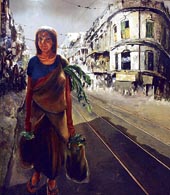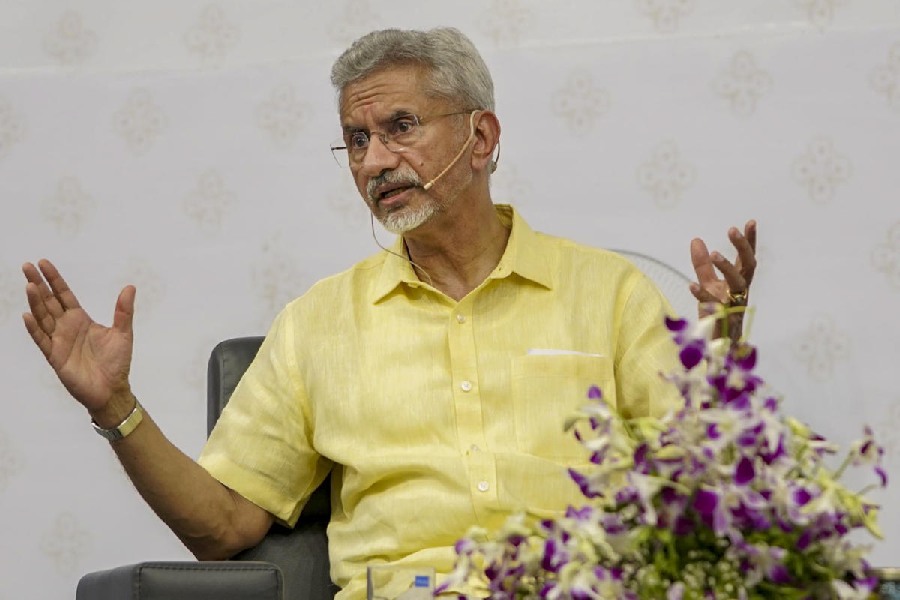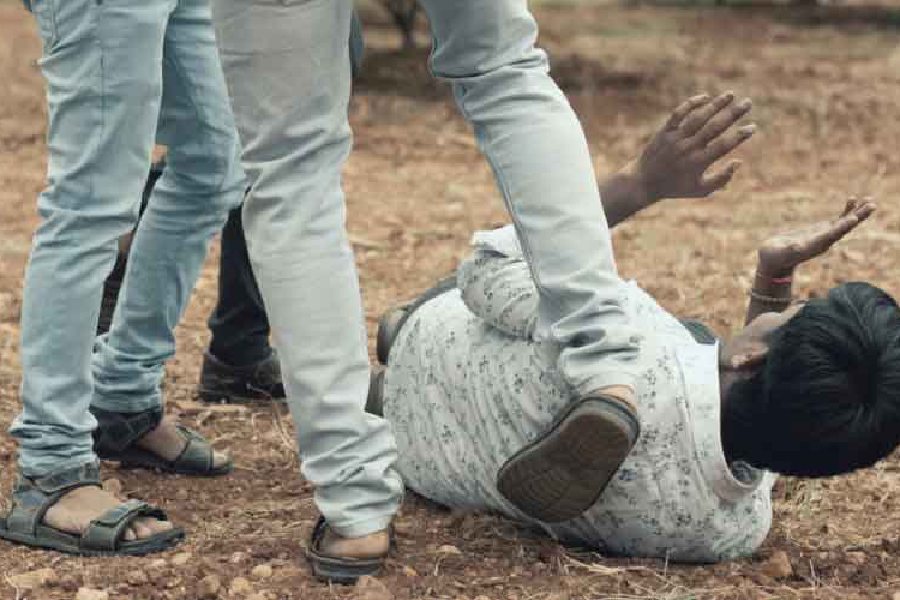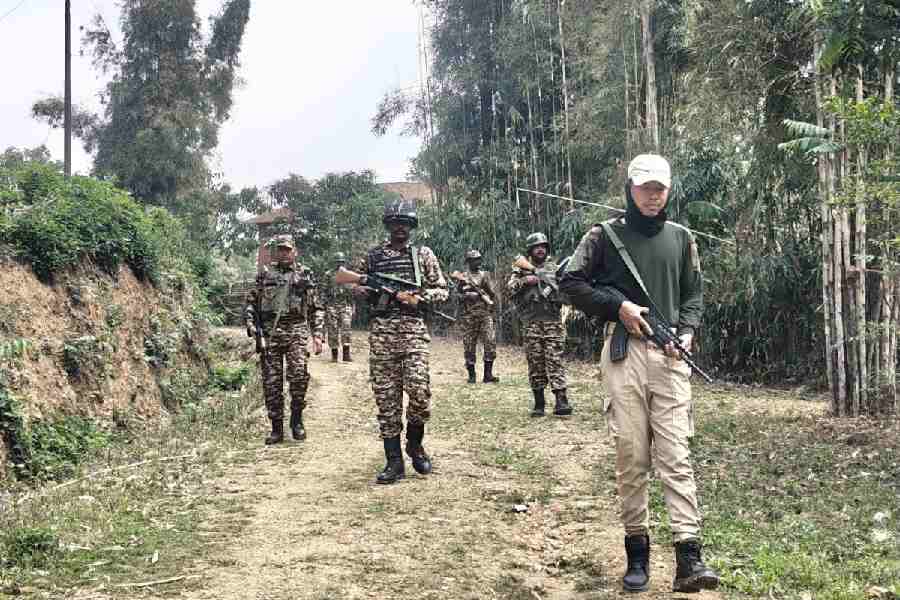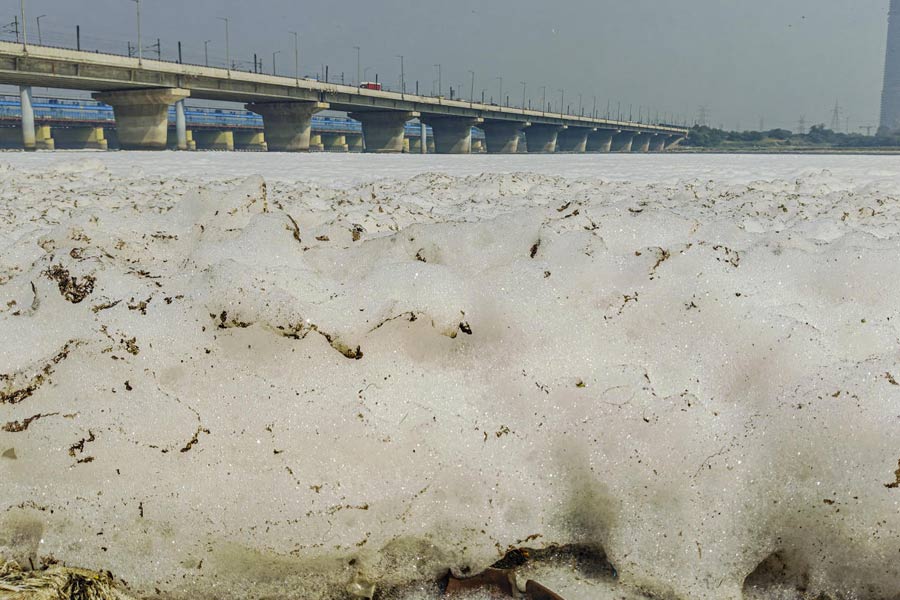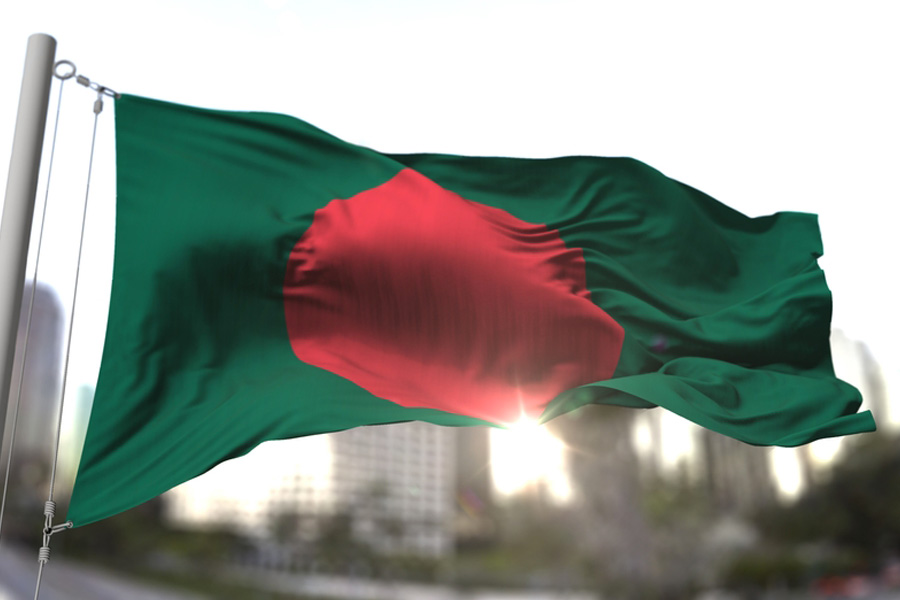 |
| A Bikash Bhattacharjee Durga on display at CIMA Gallery. Picture by Pabitra Das |
Dolls sink into the quicksands of despair in Bikash Bhattacharjee’s small mixed media paintings. Groups of these playthings, with a hint of malevolence, stare into the void. The artist, who died last December, had turned these mass-produced plastic toys into symbols of the despondence that prevailed in Calcutta in the 1970s. Innocence was not synonymous with bliss any longer.
Bhattacharjee’s paintings, in which academic realism is heightened to a state where it merges with the world of waking dreams, can still hit hard. We rediscover this at an exhibition of the artist’s works right from the 1960s, opening at CIMA Gallery on Tuesday evening.
Bhattacharjee exploited his tremendous skills as a painter to document with passion and intensity the dark reality of a city without hope he saw around him. Way back in 1965, when he held his first exhibition, he drew emaciated but gracefully elongated figures huddled together over the grey roofs and sky of the city. The immediate reality was the springboard for entering, as if magically, an inner life seething with violence, glinting in the eyes of a bride in red.
No other artist could catch with such immediacy the glimmer of melted tar, the sadness of walls without plaster.
Profoundly influenced as Bikash Bhattacharjee was by the European neo-realist filmmakers and by Vittorio de Sica in particular, the artist trained at the Indian College of Art and Draftsmanship chose to plough a lonely furrow. Photographic realism opened the trapdoor of surrealism for him.
His family of rag dolls is huddled together with silly grins stuck to their mouths. They cannot act on their own. This is a large monochromatic work, a huge drawing of people who have lost their volition. Yet these helpless creatures crawl on the streets as a gesture of protest against police brutality that was unleashed against the Naxalites. The bloodbath that followed reflected in Bhattacharjee’s canvases with images of latent violence and gore.
Bhattacharjee’s technical virtuosity came to the fore in his images of workaday Durgas in bedraggled synthetic saris and hawai chappals, as also in the watercolours he painted to illustrate Samaresh Basu’s novel Dekhi Nai Phire based on Ramkinkar’s life. They glow like fireflies in the dark.

